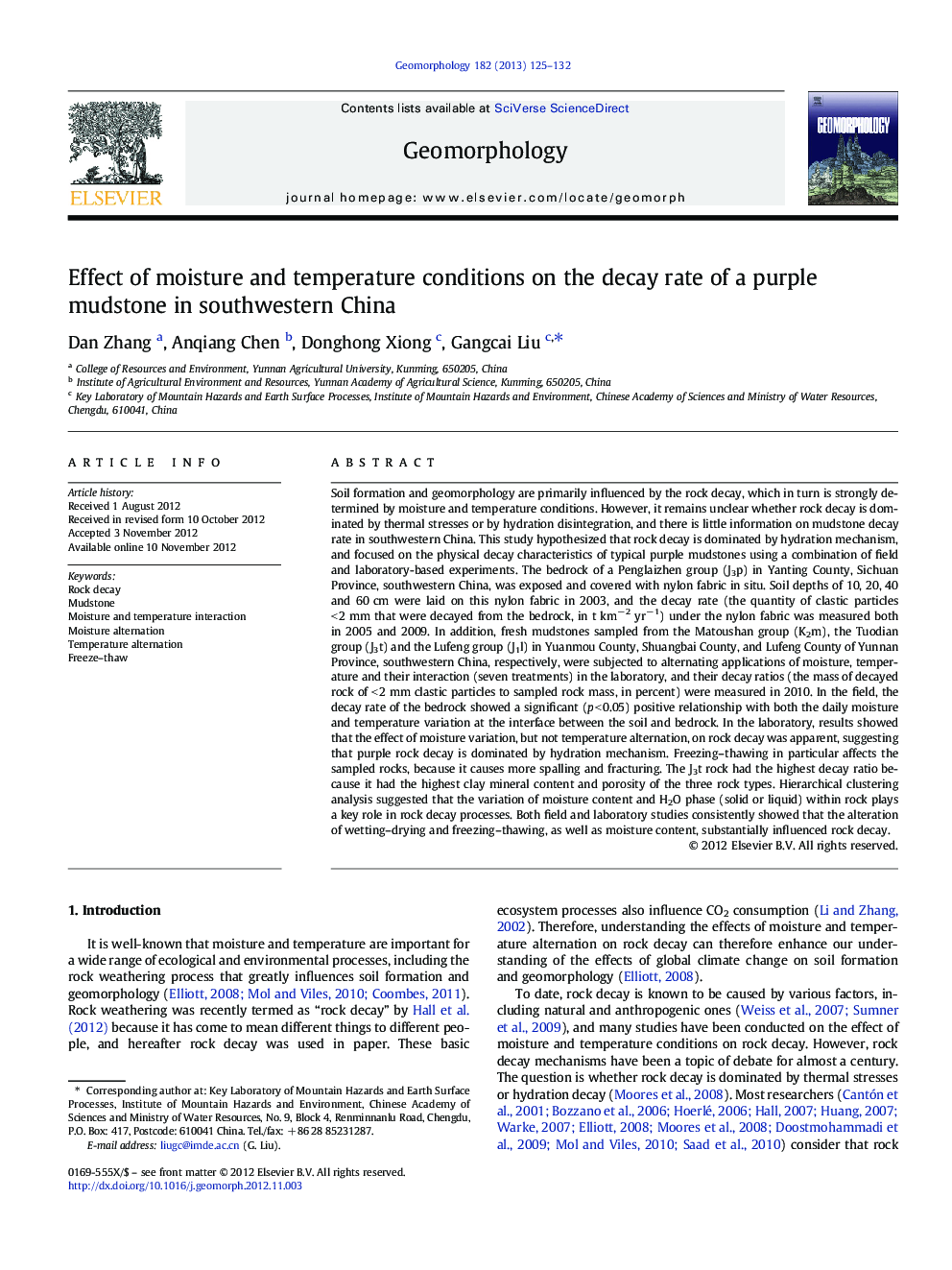| کد مقاله | کد نشریه | سال انتشار | مقاله انگلیسی | نسخه تمام متن |
|---|---|---|---|---|
| 4685040 | 1635467 | 2013 | 8 صفحه PDF | دانلود رایگان |
Soil formation and geomorphology are primarily influenced by the rock decay, which in turn is strongly determined by moisture and temperature conditions. However, it remains unclear whether rock decay is dominated by thermal stresses or by hydration disintegration, and there is little information on mudstone decay rate in southwestern China. This study hypothesized that rock decay is dominated by hydration mechanism, and focused on the physical decay characteristics of typical purple mudstones using a combination of field and laboratory-based experiments. The bedrock of a Penglaizhen group (J3p) in Yanting County, Sichuan Province, southwestern China, was exposed and covered with nylon fabric in situ. Soil depths of 10, 20, 40 and 60 cm were laid on this nylon fabric in 2003, and the decay rate (the quantity of clastic particles < 2 mm that were decayed from the bedrock, in t km− 2 yr− 1) under the nylon fabric was measured both in 2005 and 2009. In addition, fresh mudstones sampled from the Matoushan group (K2m), the Tuodian group (J3t) and the Lufeng group (J1l) in Yuanmou County, Shuangbai County, and Lufeng County of Yunnan Province, southwestern China, respectively, were subjected to alternating applications of moisture, temperature and their interaction (seven treatments) in the laboratory, and their decay ratios (the mass of decayed rock of < 2 mm clastic particles to sampled rock mass, in percent) were measured in 2010. In the field, the decay rate of the bedrock showed a significant (p < 0.05) positive relationship with both the daily moisture and temperature variation at the interface between the soil and bedrock. In the laboratory, results showed that the effect of moisture variation, but not temperature alternation, on rock decay was apparent, suggesting that purple rock decay is dominated by hydration mechanism. Freezing–thawing in particular affects the sampled rocks, because it causes more spalling and fracturing. The J3t rock had the highest decay ratio because it had the highest clay mineral content and porosity of the three rock types. Hierarchical clustering analysis suggested that the variation of moisture content and H2O phase (solid or liquid) within rock plays a key role in rock decay processes. Both field and laboratory studies consistently showed that the alteration of wetting–drying and freezing–thawing, as well as moisture content, substantially influenced rock decay.
► The effect of interaction of moisture and temperature on rock decay was studied.
► Rock decay is significantly related to moisture and temperature variation.
► The contribution of moisture to rock decay is higher than that of temperature.
Journal: Geomorphology - Volume 182, 15 January 2013, Pages 125–132
